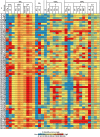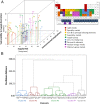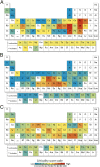Criticality of metals and metalloids
- PMID: 25831527
- PMCID: PMC4394315
- DOI: 10.1073/pnas.1500415112
Criticality of metals and metalloids
Abstract
Imbalances between metal supply and demand, real or anticipated, have inspired the concept of metal criticality. We here characterize the criticality of 62 metals and metalloids in a 3D "criticality space" consisting of supply risk, environmental implications, and vulnerability to supply restriction. Contributing factors that lead to extreme values include high geopolitical concentration of primary production, lack of available suitable substitutes, and political instability. The results show that the limitations for many metals important in emerging electronics (e.g., gallium and selenium) are largely those related to supply risk; those of platinum group metals, gold, and mercury, to environmental implications; and steel alloying elements (e.g., chromium and niobium) as well as elements used in high-temperature alloys (e.g., tungsten and molybdenum), to vulnerability to supply restriction. The metals of most concern tend to be those available largely or entirely as byproducts, used in small quantities for highly specialized applications, and possessing no effective substitutes.
Keywords: economic geology; materials science; substitution; supply risk; sustainability.
Conflict of interest statement
The authors declare no conflict of interest.
Figures






References
-
- Cowan JJ, Thielemann F-K. R-process nucleosynthesis in supernovae. Phys Today. 2004;57(10):47–53.
-
- Rauscher T, Patkos A. Origin of the chemical elements. In: Vértes A, Nagy S, Klencsár Z, Lovas RG, Rösch F, editors. Handbook of Nuclear Chemistry. Springer; New York: 2011. pp. 611–665.
-
- Robb L. Introduction to Ore-Forming Processes. Blackwell Science; Malden, MA: 2005.
-
- Paley WS, Brown GR, Bunker AH, Hodgins E, Mason ES. Resources for Freedom. President’s Materials Policy Commission; Washington, DC: 1952.
-
- Alonso E, et al. Evaluating rare earth element availability: A case with revolutionary demand from clean technologies. Environ Sci Technol. 2012;46(6):3406–3414. - PubMed
Publication types
LinkOut - more resources
Full Text Sources
Other Literature Sources

